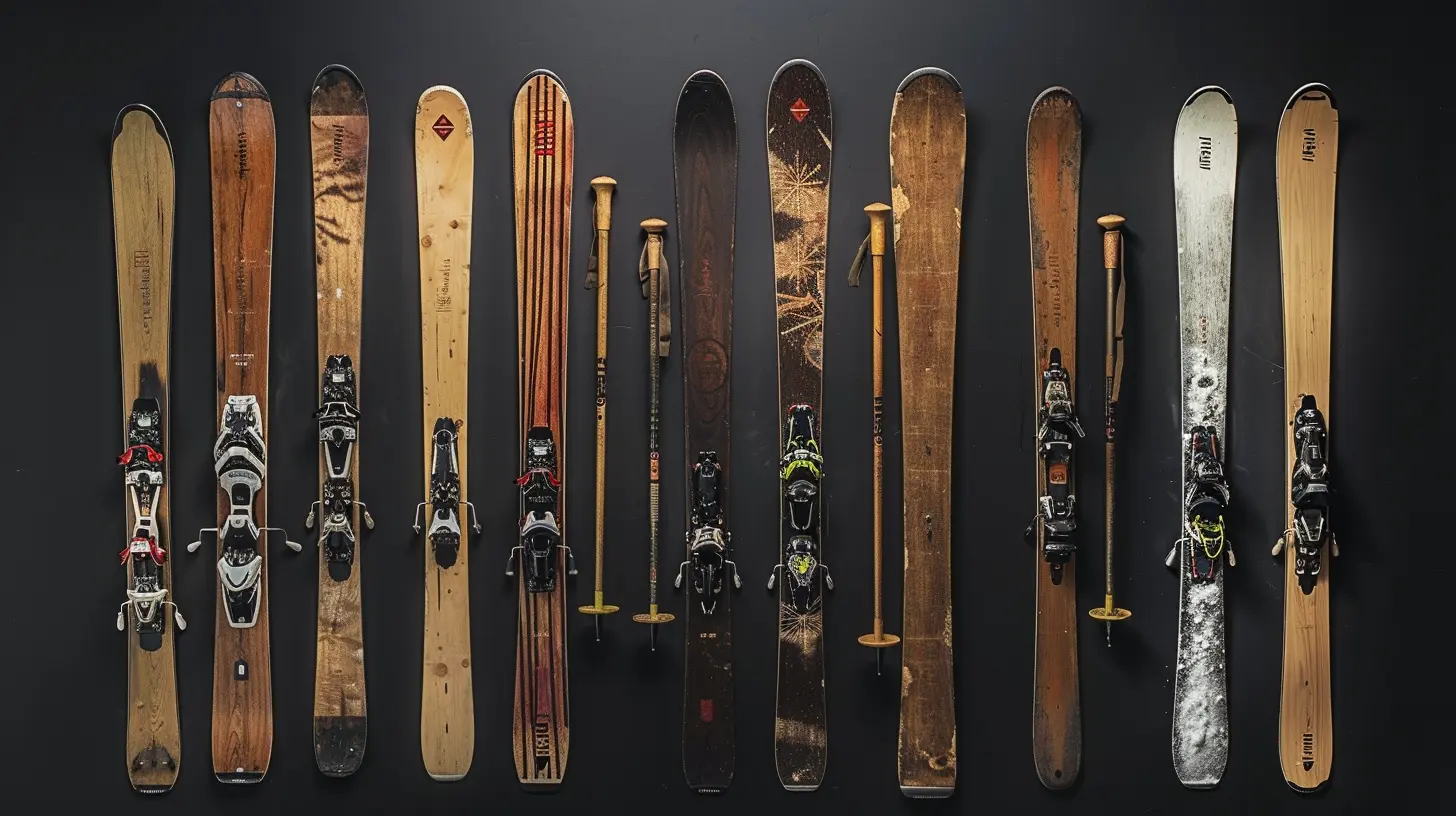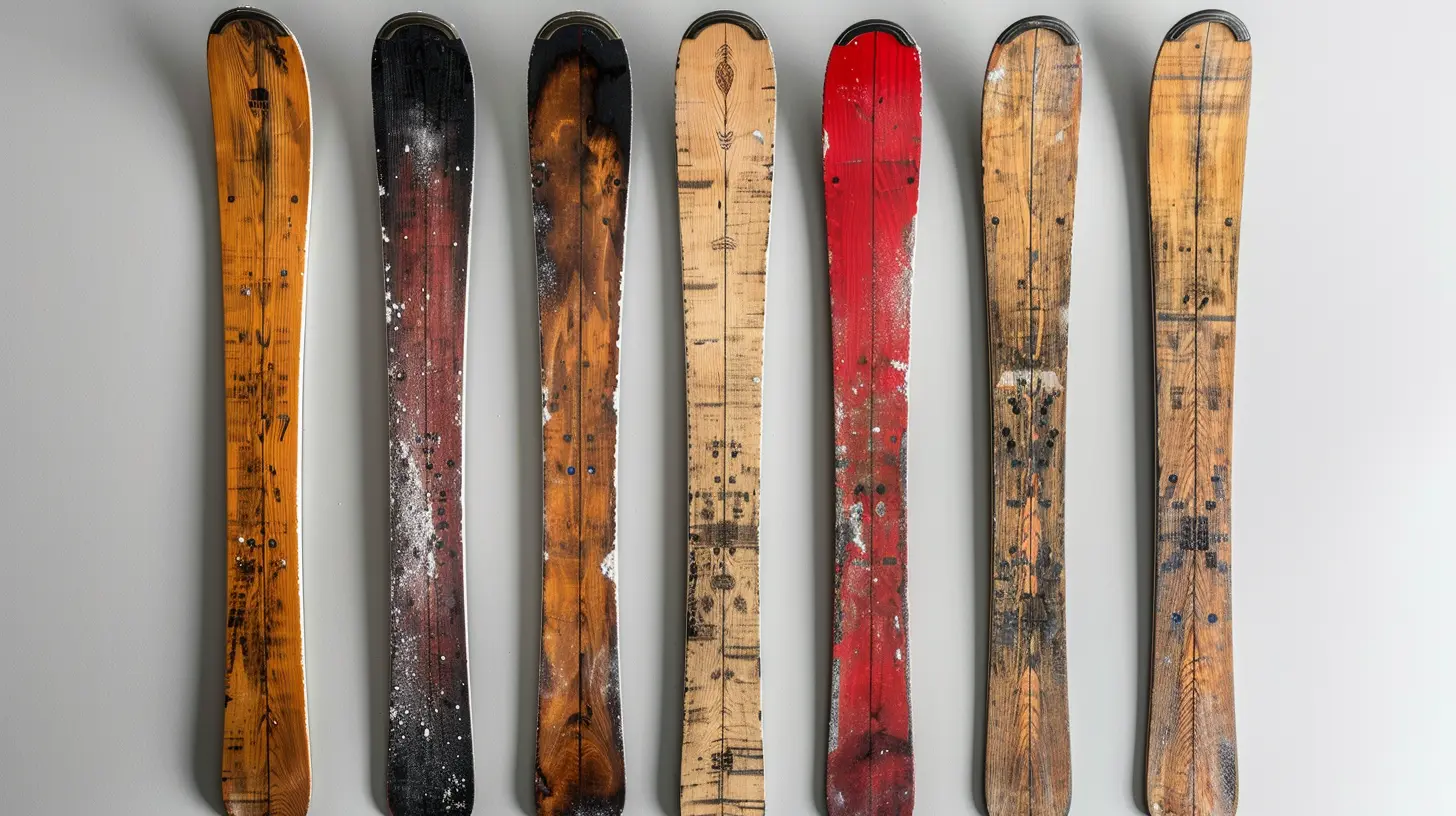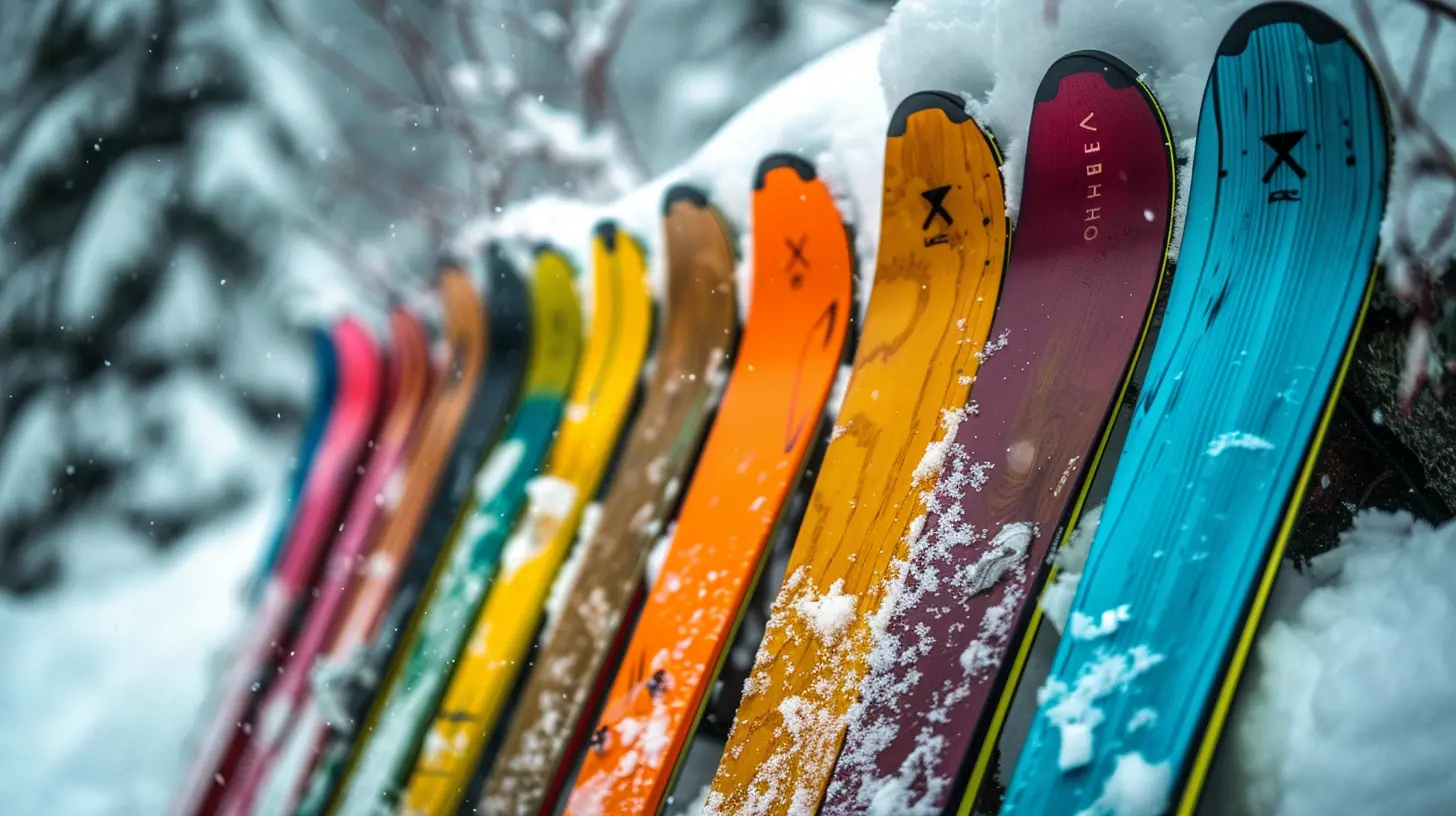The Evolution of Ski Technology: From Wooden Skis to Carbon Fiber
25 May 2025
Skiing has come a long way from its humble beginnings. Imagine strapping two pieces of wood to your feet and gliding down a mountain with nothing but balance and sheer will to keep you upright. Sounds terrifying, right? Well, that was the reality for the early pioneers of skiing.
Fast forward to today, and we have sleek, high-tech skis made from advanced materials that maximize speed, control, and durability. So, how did we get here? Let’s take a deep dive into the fascinating evolution of ski technology.
The Origins: Wooden Skis and Their Simplicity
If you think skiing is a modern sport, think again! Archaeologists have found evidence suggesting that skiing dates back at least 8,000 years. The earliest skis were nothing more than wooden planks, often carved from solid tree trunks.Ancient Skiing Cultures
Skiing originally developed as a necessity rather than a recreational activity. People in Scandinavia, Siberia, and parts of Central Asia used wooden skis to move across snowy landscapes for hunting and transportation.These early skis were simple:
- Materials: Solid wood, typically from birch or pine.
- Bindings: Leather straps or rope tied around the foot.
- Shape: Long and wide for stability on deep snow.
Compared to today's ultra-lightweight models, they were heavy and cumbersome. But at the time, they were revolutionary. 
The Introduction of Lamination: A Turning Point in Ski Technology
For centuries, skis remained fairly unchanged—until the early 1900s when laminated wood skis entered the scene. Instead of a single piece of wood, manufacturers began layering different types of wood to create stronger, more flexible skis.Why Was Laminated Wood a Game Changer?
- Strength & Durability: Layering wood added resilience, reducing the risk of skis snapping under pressure.- Flexibility: This allowed for better maneuverability and smoother turns.
- Weight Reduction: Lighter than solid wood, making movement more efficient.
Around this time, skiing was evolving into more than just a necessity—it was becoming a sport. Ski races and recreational skiing started gaining popularity, accelerating ski technology advancements.
The Metal Revolution: A Shift in Performance
By the mid-20th century, ski manufacturers experimented with adding metal edges. This single innovation drastically improved ski performance.How Did Metal Edges Change the Game?
- Increased Grip: Skis could grip icy and hard-packed snow better. No more slipping uncontrollably!- Sharper Turns: Skiers could carve into the snow with more precision.
- Longer Lifespan: Metal edges reduced wear and tear on the skis.
The 1950s saw further advancements with full aluminum and composite skis making their debut, allowing for even more durability and stability.
The Fiberglass Revolution: The Birth of Modern Skis
Arguably, the biggest breakthrough in ski technology came in the 1960s with the introduction of fiberglass. This was a game-changer that set the foundation for modern skis.Benefits of Fiberglass Skis
- Lighter and More Flexible: A drastic reduction in weight compared to wood or metal skis.- Improved Shock Absorption: Made skiing smoother, even on bumpy terrain.
- More Design Possibilities: Different flex patterns allowed for specialized skis for various types of skiing (racing, freestyle, backcountry, etc.).
Fiberglass quickly replaced traditional materials, dominating ski production by the 1970s.
The Rise of Carbon Fiber: The Pinnacle of Ski Innovation
Today’s skis are more advanced than ever, thanks to space-age materials like carbon fiber. This ultra-light and super-strong material has revolutionized the skiing world.What Makes Carbon Fiber Skis Special?
- Incredible Strength-to-Weight Ratio: Stronger than steel but significantly lighter.- Unmatched Responsiveness: Reacts instantly to skier movements, allowing for precise control.
- Enhanced Durability: Less prone to wear and tear compared to other materials.
- Optimized Performance: Used in high-performance racing and backcountry skis requiring top-tier efficiency.
With carbon fiber, skiers now have the ability to push their limits like never before—whether carving down a groomed slope or tackling deep powder in the backcountry.
Additional Innovations: Beyond Just Materials
While materials have played a significant role in ski evolution, other technological advancements have also shaped the sport.Shaped Skis (Parabolic Skis)
- Introduced in the 1990s, shaped skis revolutionized turning.- Their curved design made carving effortless, especially for beginners.
- Allowed for shorter skis without compromising stability.
Rocker Technology
- Developed in the 2000s, rocker skis feature an upturned tip and tail, making them ideal for powder skiing.- Helps skiers float on deep snow instead of sinking.
- Enhances maneuverability for both novice and expert skiers.
Smart Skis & AI Integration (The Future)
The latest innovations are going beyond materials; smart skis equipped with sensors and AI-driven technology are entering the market. These skis:- Analyze skiing performance in real-time.
- Adjust stiffness automatically based on conditions.
- Provide feedback to improve technique.
While still in their early stages, smart ski technology could redefine skiing as we know it in the coming years.
How Ski Technology Has Changed the Experience
With all these advancements, skiing today is safer, more accessible, and more enjoyable than ever before. Here’s how technological progress has transformed the experience:1. More Control for All Skill Levels
- Beginners can learn faster with lighter and more forgiving skis.- Professionals can push their limits with high-performance models.
2. Enhanced Safety
- Better materials reduce the risk of injury (e.g., improved shock absorption).- Adjustable bindings help prevent twisted knees and broken ankles.
3. Expanded Skiing Opportunities
- Specialized skis for powder, racing, freestyle, and touring let skiers choose their ideal experience.- Lightweight materials make backcountry skiing more accessible for adventurers.
Technological progress has made skiing more than just a sport—it’s now an art form, an adventure, and a lifestyle.
Final Thoughts: What’s Next for Ski Technology?
Looking ahead, ski technology will likely continue to evolve at a rapid pace. With advances in AI, materials science, and sustainability, we might soon see:- Self-adjusting skis that adapt to terrain in real-time.
- Eco-friendly materials that reduce environmental impact.
- Ultra-lightweight yet indestructible skis pushing the boundaries of performance.
One thing is for sure—skiing will only get faster, more efficient, and more thrilling in the years to come.
So the next time you hit the slopes, take a moment to appreciate how far ski technology has come. From primitive wooden planks to cutting-edge carbon fiber marvels, the evolution of skiing is a testament to human ingenuity and the never-ending pursuit of perfection.
all images in this post were generated using AI tools
Category:
SkiingAuthor:

Frankie Bailey
Discussion
rate this article
3 comments
Skylar Ramirez
This article captures the fascinating journey of ski technology. It's remarkable how advancements have transformed the sport, enhancing performance and safety while preserving the thrill of skiing. Truly inspiring!
June 1, 2025 at 4:45 AM

Frankie Bailey
Thank you! I'm glad you enjoyed the article and appreciate the exciting advancements in ski technology.
Uriah McFarlin
This evolution highlights how innovation drives performance and accessibility in winter sports today.
May 31, 2025 at 3:57 AM

Frankie Bailey
Absolutely! Innovation has transformed winter sports, making them more efficient and accessible for everyone.
Damon Gomez
Fascinating journey! It's amazing how far skiing has come—who knew we’d trade wood for carbon fiber?
May 27, 2025 at 10:43 AM

Frankie Bailey
Thank you! It's incredible to see how technology has transformed skiing, enhancing performance and safety in ways we never imagined.



